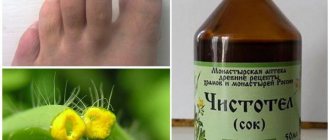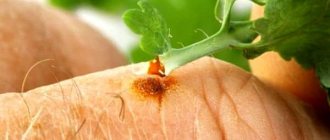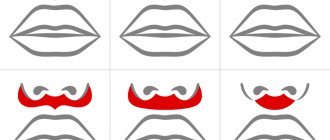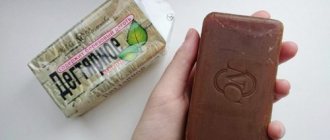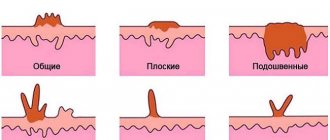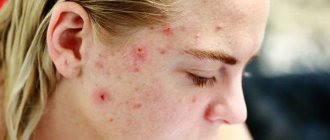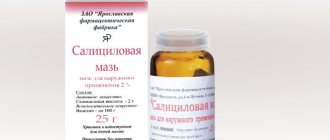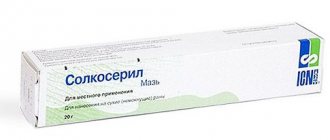Table of contents
- Where do they come from: warts, papillomas, condylomas?
- What is celandine as a plant?
- Chemical composition and therapeutic effect of celandine
- How does celandine work against warts, papillomas and condylomas?
- How to collect and prepare celandine?
- Other useful uses of celandine
- General contraindications to the use of celandine:
In Ancient Greece, this plant was nicknamed swallow grass, since it bloomed simultaneously with the return of birds from warm regions, and faded with their departure. This herb began to be called “celandine” in Russia. The fact is that the juice of the plant does an excellent job of cleansing the skin of various age spots, acne, lichen, as well as warts, papillomas and condylomas.
Where do they come from: warts, papillomas, condylomas?
First, it must be said that the occurrence of all these neoplasms on the skin or mucous membranes has no connection with human age. Children, teenagers, and adults often face this problem. The fact is that warts, papillomas and condylomas are neoplasms of an infectious nature that belong to the Human Papillomavirus (HPV) family of papillomaviruses. Like any other virus or group of viruses, the human papillomavirus, HPV (this is its other name) “loves” a weakened immune system. As soon as our immunity “gives up”, it is, as they say, right there. HPV is transmitted from person to person through direct contact, through shared household items, during sexual intercourse, during childbirth and under other circumstances. The appearance of such neoplasms is often associated with neglect of personal hygiene rules.
Warts, papillomas and condylomas are predominantly benign neoplasms. However, there are different types of papillomaviruses that can cause malignant neoplasms of low and high oncogenic risk, so before starting to use celandine, we must be sure of what we are getting rid of. You need to delete “good” forms in any case, because Over time, they can become malignant, especially if they are injured, squeezed, irritated, etc.
Warts, papillomas and condylomas differ in appearance and location.
FIVE MYTHS ABOUT WARTS
Dermatovenerologist, infectious disease specialist Svetlana Valentinovna Kuklina, a doctor of the highest category, tells the story.
People are often confused about such a pressing problem as warts. Often, skin manifestations push people to undergo improper treatment, which can be harmful to health and beauty. Here are five common myths about warts that affect your health, and even your life.
Myth 1. Warts are exclusively a skin disease. Most people believe that all skin manifestations, including warts, signal exclusively skin diseases. However, it is not. The wart is just the tip of the iceberg. But the problem itself, the danger, lies within a person. Let's look at it with an example. If you take a good-looking apple, but with a small wormhole, then breaking it in half, you will see that it is infested with a large number of worms. Roughly the same thing happens in humans. When the immune system is weakened, the human papillomavirus resides in the basal cells of the body's skin. And this manifests itself on the skin as just such a small problem, seemingly not so significant.
There are several types of human papillomaviruses (HPV), which may or may not cause cancer. Many people are carriers of this virus. If immunity is normal, then the presence of HPV is simply not noticeable to our body. However, if the body is weakened, the virus hijacks a human cell and begins to develop and multiply in it.
Myth 2. Warts and papillomas are the same thing. Warts and papillomas are caused by the same virus, HPV, but by different types. Accordingly, they may differ, for example, in the places where tissue growths that this virus causes appear. Some go away without a trace, without treatment, while others, on the contrary, require mandatory removal. There are benign and there are malignant skin manifestations of HPV, which can lead to serious consequences. So, what do papillomas and warts look like?
Wart If we talk about warts, they are usually round or cone-shaped and quite dense to the touch. Most often flesh-colored. May be yellowish or slightly brownish. The diameter can be up to ten millimeters. Although it can be more than a centimeter. The top of the wart is dry and has a so-called root. A typical location is the hands and feet. There are also flat warts or juvenile warts. They often appear on the face and mainly affect young children and adolescents, which is why they are called that. There are plantar warts, located on the sole of the foot, which are often confused with corns. Of all formations, a wart is the most benign.
Papilloma Characteristic features of papilloma are the presence of a stalk and the absence of a root. The diameter of papillomas is generally five to ten millimeters. But there is more. Papillomas are often flesh-colored, but can also be dirty brown. Typical places for papillomas to appear are the face, neck, armpits and other natural folds. Papilloma is also found on the cervix. And if warts do not require mandatory treatment and can go away on their own, then papillomas do not go away on their own. In addition, they can grow and become malignant, especially if they are regularly injured, for example, by clothing or jewelry.
Genital condylomas Even more dangerous are formations that are pink or bluish in color. Externally similar to a cockscomb. They have no root and do not adhere tightly to the skin. A characteristic feature of genital warts is sexual transmission. They are often located on the genitals, as well as mucous membranes, including the mucous membranes of the mouth, conjunctiva and genitourinary organs. Sometimes in patients, genital warts may not appear on the external genitalia, but can be found in the vagina, on the cervix and cause dysplasia. The main cause of cervical cancer is the human papillomavirus of high oncogenic risk.
When skin manifestations occur, laboratory tests should be performed. Most often, a Papanicolaou smear (PAP test) is prescribed, and analysis is carried out using the polymerase chain reaction (PCR) method. Sometimes a histological examination of tissue samples obtained by biopsy and determination of antibodies is carried out. If genital warts appear, you should seek help from a dermatovenerologist. They usually also consult with an immunologist.
Myth 3. Infection with a virus through a handshake. If you shake hands or touch the hand of a person who has a wart, it is almost impossible to become infected with it. If the skin of a healthy person is not damaged, the risk of transmission of the virus from an infected person is zero. Moreover, if a sick person has a damaged wart, and a healthy person has any damage to the skin, then in this case, upon contact, viral particles may well be transmitted from the sick person to the healthy person.
Infection often occurs when sharing personal hygiene items, such as towels, manicure accessories, washcloths, etc.
Myth 4. You can cure a wart on your own. Why shouldn't you self-medicate? Firstly, you cannot be sure exactly what kind of problem has appeared on the skin: a wart or a papilloma. Secondly, self-medication can be harmful to health and also ruin your appearance. Independent actions can cause a burn, a scar, which will still have to be treated later. Do not use acidic compounds. Acid-based products are usually transparent, so the area and depth of their effect is not visible. As a result, you can get a severe burn that will take a long time to heal. Subsequently, the burn will turn into a scar, which is not very aesthetically pleasing.
It is highly not recommended to pull papillomas to remove them. When bandaged, the upper part of the papilloma dies and falls off. But the human papillomavirus, again, remains in the skin layers, and the papilloma will grow again. In addition, this can spread the infection even further.
Myth 5. A wart can be removed once and for all. When a wart is removed, only its external manifestations disappear. But the virus itself is not destroyed. In the future, you need to work with the immune system. According to statistics, within two to three years, in eighty to ninety percent of cases, the virus is eliminated from the body. Sometimes elimination is possible against the background of self-healing. But more often, the treatment of warts requires the joint participation of dermatologists, immunologists, and gynecologists in the process.
Removal of such skin manifestations in cosmetology or medical institutions is carried out using cryodestruction, laser coagulation, and electrocoagulation. Liquid nitrogen or the action of heat causes controlled necrosis of the skin, the formation itself, and, accordingly, the growth is removed.
Prevention measures. It is important that the skin is protected from cuts and damage. Otherwise, you need to treat the damaged area and cover it with an adhesive plaster. At this time, visiting public places such as bathhouses, saunas, and swimming pools is not recommended. As for genital warts, you need to use condoms to minimize the risk of such unwanted manifestations. For prevention, it is important to maintain a normal immune system. To do this, you need to rest properly, eat right, consume enough protein and vitamins to replace and restore immune cells.
Make an appointment with a dermatologist-venereologist by phone +7 (8332) 497-003 or leave a request for a free call
In addition, you can take advantage of the opportunity to make an electronic appointment with a doctor
Save
What is celandine as a plant?
Greater celandine (Chelidonium majus L.) is a plant that is a perennial herb of the poppy family. Popularly, celandine is also called warthog, chistukha, chistolot, etc. Its flowering begins in May and ends in autumn. All components of the plant are poisonous.
In almost the entire European part of our country, celandine grows as a weed. Small groups of this plant can be found under fences near homes, in garden and summer cottage plots, city parks and other places. Celandine is also cultivated. By the way, as a means to get rid of warts, celandine was brought to the USA by colonialists in 1672 and is widespread there to this day.
Chemical composition and therapeutic effect of celandine
All parts of the plant contain alkaloids, saponins, organic acids (malic, citric, succinic), flavonoids, a small amount of essential oil, resinous substances, bitterness, carotenoids and ascorbic acid. Celandine seeds are approximately 50% fatty oil.
It is not for nothing that alkaloids occupy first place in the chemical composition of celandine. There are more than 20 of them in it and that is why the plant is poisonous. As proof of this:
- chelidonine is an alkaloid similar in structure to morphine and papaverine;
- homochelidonin is a convulsant poison and a strong local anesthetic;
- chelerythrine has a local irritant effect;
- sanguinarine has a short-term narcotic effect with the appearance of a special kind of convulsions;
- Protopin tones the smooth muscles of the uterus.
However, if celandine were not so poisonous, how would it overcome our “favorite” viruses? By the way, the word “virus” translated from Latin means “poison” or “poisonous principle.” So, we can fight infection using the power of nature? In this case YES. This is true. All you need is a little effort and patience.
What pharmaceutical products can be used to cauterize?
You can buy several analogues at the pharmacy, whose names are similar. These include:
- "Altai celandine" . A relatively safe medicine that can get rid of old growths. It also helps in removing growths that have formed on the feet. Use is contraindicated for children under seven years of age.
- "Mountain celandine" . The product is more powerful than the analogue of the Altai extract. Available in the form of a balm or tincture. In addition to the perennial plant included in the composition, there are extracts from kakali and gentian.
- "Super celandine" . It contains alkali, which can cause skin burns. Available in pencil form.
- "Superclean" . Sold in the form of a solution in small bottles with an applicator. It contains: water, potassium hydroxide, toxic sodium, salts and sodium bicarbonate.
All of these drugs are available without a doctor's prescription.
Treatment of warts is a complex process, which may not lead to getting rid of them in all cases. In medicine, they are classified as benign formations, but there is a risk of degeneration into malignant. After all, the virus will not disappear from the body, but if the immune system weakens, it may remind itself again. Because no method of removal has a 100% guarantee that there will be no relapse.
How does celandine work against warts, papillomas and condylomas?
Before the procedure, the growth on the skin is moistened with water. After this, its top layer is removed with a sterile cutting instrument. Then the celandine preparation is applied. This could be, for example, milky juice, tincture or oil based on this plant.
MILKY JUICE OF CELINETELE
The juice of freshly picked grass is applied to the problem area several times a day. Depending on the type of tumor, severity and other factors, treatment may last 1–2 weeks.
TINCTURE BASED ON CLEANITY
About 2/3 of the celandine leaves are placed in a glass container, filled with 70% medical alcohol and infused in a dark place for 3 weeks. The finished tincture is used to treat the problem area several times a day. For existing plantar warts, apply compresses to the feet (hold for 10–15 minutes). The course of treatment is 1 week.
"CLEAN" OIL
Celandine leaves are placed in a 0.5-liter glass jar up to the shoulders and filled to the top with olive oil. They should infuse for 2 weeks under direct sunlight with regular stirring. After this, the contents of the jar are filtered and used as compresses. The compress should be changed once every 12 hours. The course of treatment is 1–2 weeks.
Celandine: medicinal properties
Even in ancient times, the juice of the plant was used to cleanse the skin of pigmentation, acne and various growths. That is why the grass is popularly called “yellow spurge” or “warthog”.
The therapeutic properties of the plant reach their maximum during flowering time - from May to June. It is at this time that it is recommended to harvest the herb for medicinal use.
Celandine extract has the following beneficial properties:
- antimicrobial;
- anti-inflammatory;
- antiseptic;
- painkillers;
- antihistamine.
The above effects make it possible to use celandine juice in the treatment of lichen, calluses, papillomas, warts, and purulent wounds at home without constant medical supervision. However, it is important to remember that a wart is a papule with infected fluid inside. The surface layers of the tissue die off as a result of the influence of the virus, but new cells continue to grow above the existing source of infection.
Other useful uses of celandine
Since the healing power of celandine also lies in its above-ground part and roots, you can collect it not only to get rid of warts, papillomas or condylomas, but also from other problems associated with the condition of the skin and mucous membranes externally , and also use it with the permission of a specialist it orally or topically according to After all, this medicinal plant has antimicrobial, antifungal, anti-inflammatory, antituberculosis, immunosuppressive, sedative, antispasmodic, analgesic, diuretic, choleretic, hypotensive, antiallergic effects, etc.
Based on this, celandine is used for:
- angina pectoris and hypertension;
- diseases of the gastrointestinal tract and liver;
- gout, rheumatism, polyarthritis;
- periodontal disease;
- tuberculosis;
- various skin diseases;
- colpitis, endocervicitis, etc.
In city pharmacies you can find a ready-made medicinal product - Mountain celandine (made from the milky juice of celandine). As for SuperClean and SuperClean, these products have nothing to do with this plant and are cosmetic liquids based on alkalis. Be vigilant and attentive when choosing medications.
Laser or nitrogen?
Today, papillomas and warts are cut out with electric current or radio waves, or evaporated from the surface of the skin with a laser beam. In the case of small formations, doctors limit themselves to local anesthesia, but if there are many warts or they are large, they do integration anesthesia, when the drug is injected at some distance from the operation area, which makes it possible to numb a fairly large area of the body.
But the previously common method of influencing formations with liquid nitrogen, although still used in some clinics, is not as effective as laser and coagulation.
General contraindications to the use of celandine:
- increased sensitivity;
- bronchial asthma (BA);
- epilepsy;
- unstable angina;
- pregnancy and lactation;
- children's age (with caution).
Author: Ekaterina Solovyova
Please note that the information presented on the site is for informational and educational purposes only and is not intended for self-diagnosis and self-medication. The selection and prescription of medications, treatment methods, as well as monitoring their use can only be carried out by the attending physician. Be sure to consult a specialist.
Interactions with other drugs
When treating with Superchistotel in complex therapy, the following features should be observed:
- The use of medications with similar effects on the skin is prohibited;
- Supercleaner cannot be used with preparations containing alcohol;
- Complex therapy is used as prescribed by a doctor; it is prohibited to use additional medications on your own.
The use of Superclean is contraindicated in case of drug and alcohol addiction.
